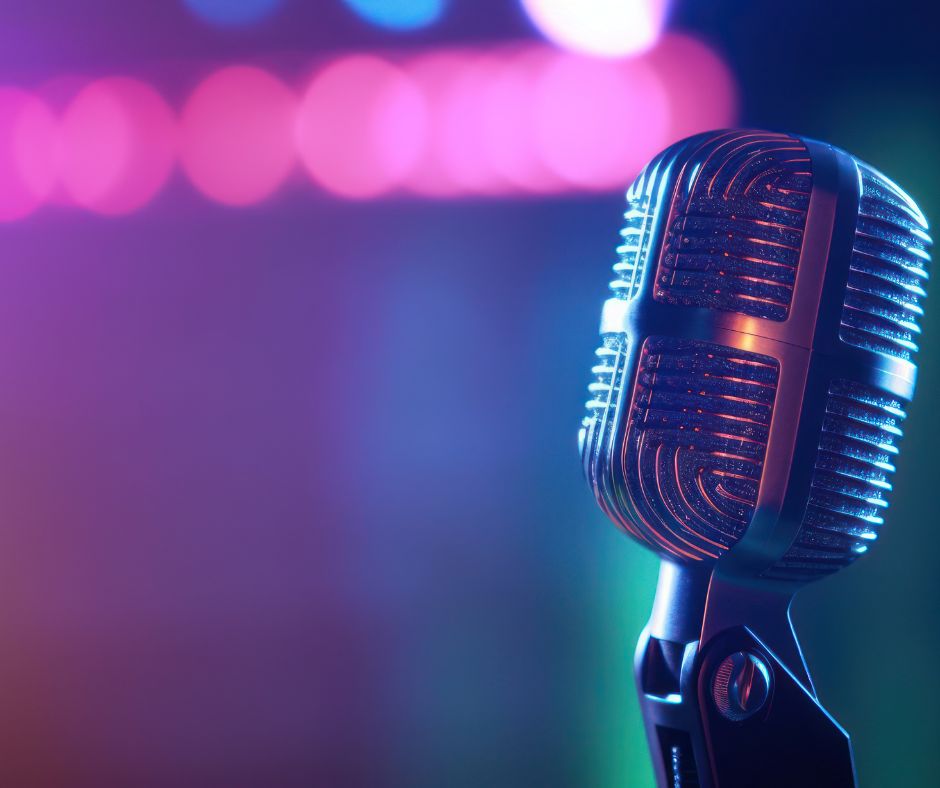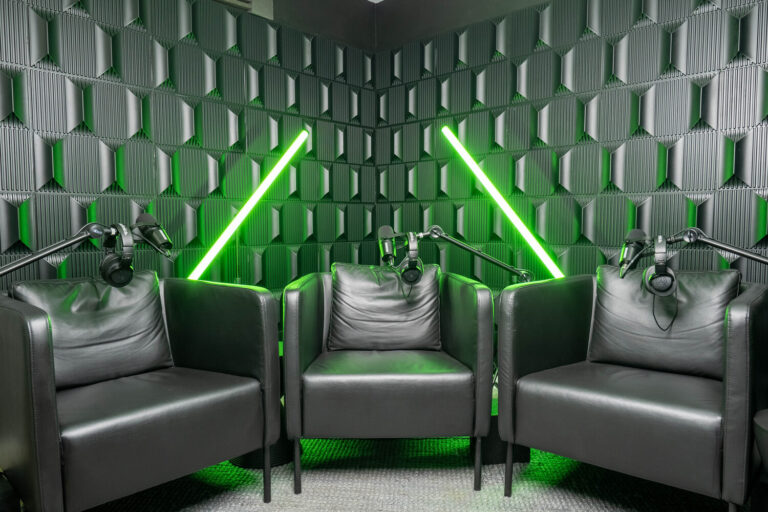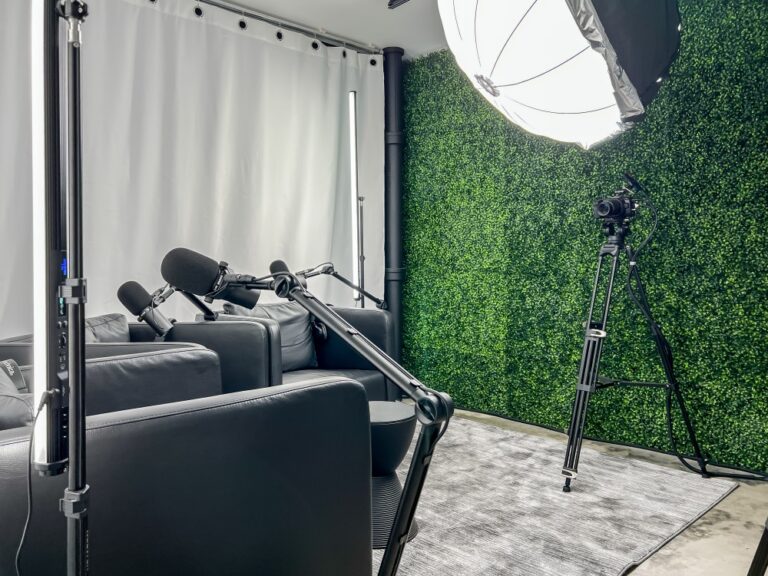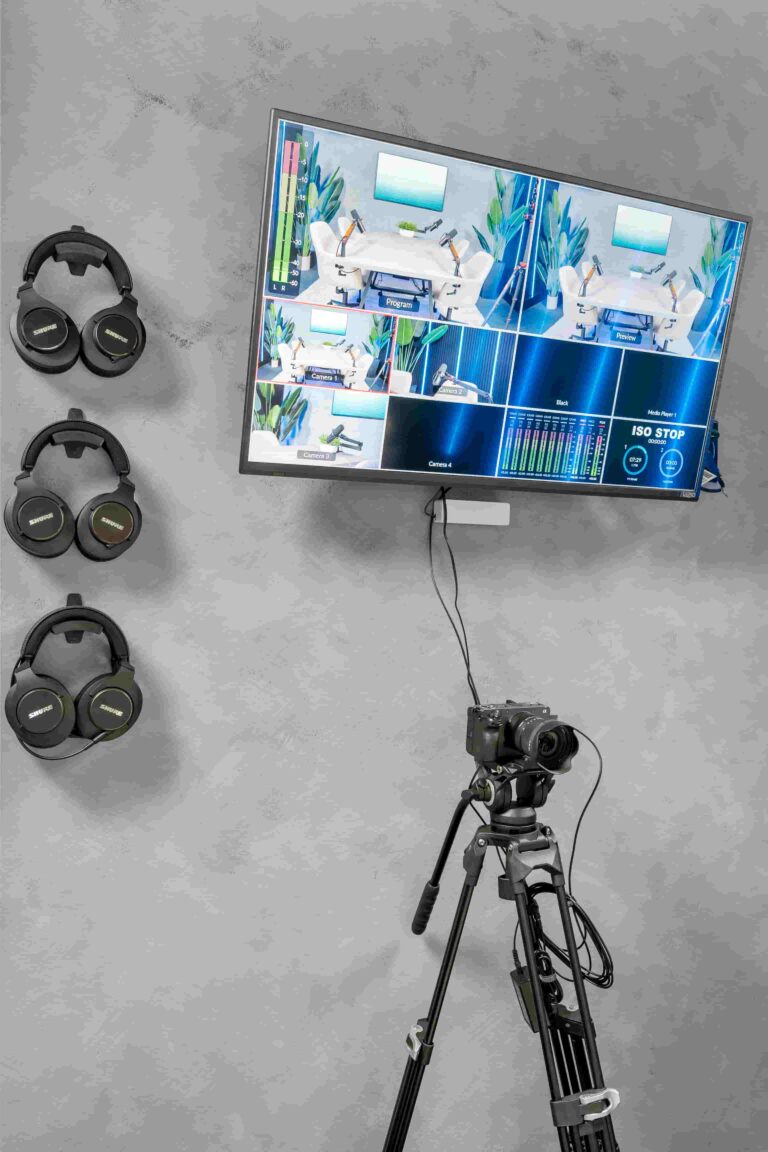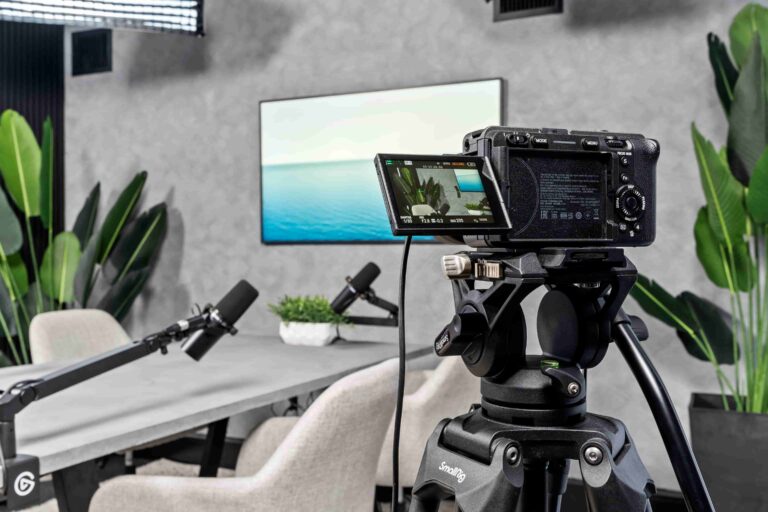Choosing the Right Microphone for Your Podcast Studio
Just as a chef needs the right ingredients to create a delicious meal, a podcaster needs the right microphone to create a high-quality recording. Choosing the right microphone can be a daunting task, with so many different types, polar patterns, and budget considerations to take into account.
In this article, we will guide you through the process of choosing the perfect podcast studio microphone, helping you to create a show that sounds as professional as it is engaging.
Book Your Next Project With Us
Boost your creative process at Media Pouch Studios - your all-in-one hub for creation and growth
Let´s Make A DealMicrophone Types
Similar to your lighting podcast setup, the type of microphone you choose will depend on what type of show you intend to produce and the environment in which you’re recording.
Dynamic Microphones
Dynamic microphones use a magnet to convert sound waves into an electrical current. They are durable and excellent for isolating sounds. However, they require a high input gain and may lack sensitivity compared to other microphones. Examples of popular dynamic podcasting microphones include the Shure SM7B and the Electro-Voice RE20.
Condenser Microphones
A Condenser mic uses an electrically charged diaphragm to convert sound waves into electrical signals. They have excellent sensitivity and are ideal for recording in a controlled studio environment. Despite this, they are more fragile than dynamic microphones and can be more expensive. Examples of popular condenser podcasting microphones include the Audio-Technica AT4053B and the Rode NT1.
Ribbon Microphones
Ribbon microphones use a thin ribbon of metal to capture sound waves. They have a warm and natural sound, but they are not as widely used as dynamic microphones and condenser mics. Examples of popular ribbon podcasting microphones include the Royer R-121 and the AEA R44C.
Polar Patterns
Polar patterns refer to the shape of a microphone’s pickup area. They range from omnidirectional, which captures the sound quality equally from all directions, to figure eight, which captures sound from opposing sides but not the rear and front.
Understanding polar patterns can help you determine what type of microphone is best suited for your podcast studio equipment needs.
Cardioid
Cardioid microphones capture sound waves in a heart-shaped pattern and are ideal for recording a single source while rejecting background noise. Nevertheless, they may not be the best choice for a multi-person podcast. Examples of popular cardioid microphones for podcasting include the Audio-Technica AT2020 and the Shure SM57.
Omnidirectional
Omnidirectional microphones capture sound waves equally in all directions and are ideal for recording ambient sounds or group discussions. However, they do not reject background noise as well as cardioid microphones. Examples of popular omnidirectional microphones for podcasting include the Rode Procaster and the AKG Pro Audio C414.
Bidirectional/Figure-8
Bidirectional microphones capture sound waves from the front and back while rejecting sounds from the sides. They are ideal for recording interviews or conversations between two people. An example of a popular bidirectional microphone for podcasting is the Rode NT2-A.
Microphone Connectivity
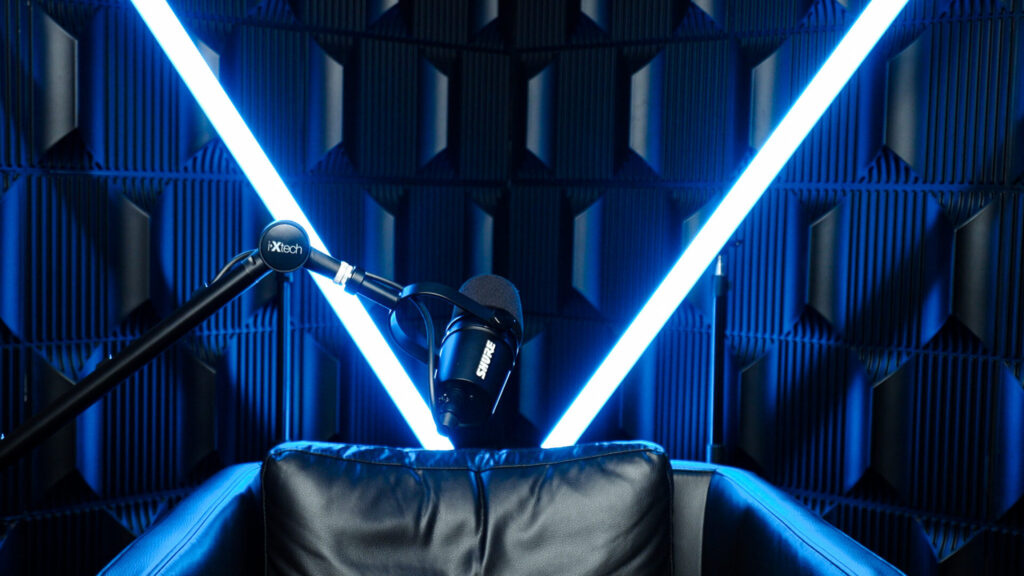
Considering the type of microphone connection is also important. Most microphones use either an XLR or USB mic connector.
USB Microphones
A USB mic connects directly to a computer via USB and is ideal for beginners or podcasters who are recording in a portable setup. But they have the drawbacks of limited sound quality and limited options for upgrading. Examples of popular USB mics for podcasting include the Blue Yeti and the Samson Meteor.
XLR Microphones
XLR podcast mics require an external audio interface or mixer to connect to a computer and are ideal for podcasters who want more control over their audio settings. Examples of popular XLR microphones for podcasting include the Electro-Voice RE20 and the Heil PR-40.
Microphone Accessories
Podcast mic accessories such as windscreens, shock mounts, and pop filters can help you get the best sound possible. These are critical if you are building your podcast studio.
Shock Mounts
Shock mounts reduce vibrations and handling noise and are essential for producing high-quality audio. However, due to the difference in size of microphone bodies, shock mounts are not interchangeable. Examples of popular shock mounts for podcasting include the Rode SMR and the Shure A55M.
Pop Filters
Pop filters reduce plosive sounds such as “p” and “b” and improve clarity in vocals. While they are not essential, they can improve the sound quality of your recordings. Examples of popular pop filters for podcasting include the Stedman Proscreen XL and the On-Stage ASVS6GB.
Wind Screens
Wind screens reduce wind noise and can be used in outdoor recording environments. However, they should not be used indoors as they may degrade sound quality. Examples of popular wind screens for podcasting include the Shure A81WS and the Rode WS2.
Microphone Placement
Proper microphone placement is crucial for achieving high-quality sound in podcast recordings. The placement of the microphone will depend on the type of microphone and the polar pattern being used.
For example, with a cardioid microphone, it is best to place the microphone directly in front of the host’s mouth, about six inches away. With an omnidirectional microphone, it is best to place the microphone further away from the host to capture a wider range of sound.
Budget Considerations
When it comes to podcast microphones, there is a wide range of prices available. The budget for a podcast microphone will depend on the individual’s needs and resources. Budget microphones can cost as little as $50, while high-end microphones can cost several thousand dollars. It is important to consider the trade-offs between cost and quality when choosing a microphone for podcasting.
Two examples of budget microphones are the Audio-Technica ATR2100 and the Samson Q2U. Both of these microphones are popular among podcasters who are looking for a cost-effective solution.
On the other hand, if you are looking for a higher-end microphone, the AKG Pro Audio C414 and the Shure SM7B are great options. Both of these microphones have been used on countless podcasts and provide consistent, high-quality sound.
No matter what microphone you choose, it is important to remember that the quality of your recordings is ultimately dependent on the quality of the equipment you are using. Investing in a good microphone can make a huge difference in the sound of your podcast.
Book Your Next Project With Us
Boost your creative process at Media Pouch Studios - your all-in-one hub for creation and growth
Let´s Make A DealAdditional Considerations
There are several additional factors to consider when choosing a podcast microphone.
Portability
Depending on your podcasting needs, you may want to consider a portable microphone. Portable microphones can be easily transported and provide more flexibility for on-the-go recordings.
Brand Reputation
When selecting a podcast studio microphone, it is important to consider the brand’s reputation. Popular brands such as Shure and Audio-Technica have established reputations for producing high-quality microphones.
Compatibility
It is important to make sure that the microphone you choose is compatible with the recording software you are using. Many microphones will come with a USB mic connection, which is compatible with most recording software.
Final Thoughts
Choosing the right microphone for your podcast studio is essential for achieving high-quality sound. Dynamic microphone, condenser mic, and ribbon microphones each have their advantages and disadvantages, and the choice will depend on individual needs and preferences.
Polar patterns also play a significant role in microphone selection. Budget considerations and additional factors such as microphone placement, accessories, and brand reputation should also be taken into account.
By carefully considering these factors, podcasters can choose the right microphone for their needs and produce high-quality recordings that engage and entertain their listeners.
Want to save yourself the trouble of building a podcast studio? Renting the premier podcast studio in Austin, Texas is easy with Pouch6 Studios.

